

Fractals are special geometric figures that have three basic properties: fractals are self-similar, have fractional dimension, and are formed by iteration. Click HERE to go to a website that gives some in-depth explanations of these properties.
While many fractals in mathematics are complicated figures that are created with equations in computer programs, some are simple enough that they can be constructed by hand. To make these constructions even easier, we can use The Geometer's Sketchpad. GSP allows us to construct the initial stage of the fractal and then use the loop feature to program the software to perform successive iterations.
In this essay, I have presented five different fractals that can be created on GSP. Each fractal is accompanied by a GSP script that you can use to create your own file of the fractal.
Resources:
Bennett, Dan (1999). Exploring Geometry with The Geometer's Sketchpad. Key Curriculum Press: Berkeley, CA.
Chanan, Steven (2000). The Geometer's Sketchpad: Learning Guide. Key Curriculum Press: Emeryville, CA.
Chanan, Steven, ed. (2000). 101 Project Ideas for The Geometer's Sketchpad. Key Curriculum Press: Emeryville, CA.
Sierpenski's Triangle is created by starting with an equilateral triangle. The midpoint of each side is constructed and these three points are connected. The process is then repeated only on the triangles that are oriented in the same direction as the original triangle.
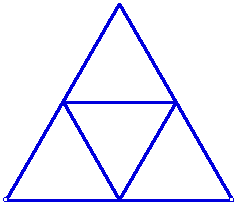
Here are a few iterations of the fractal:
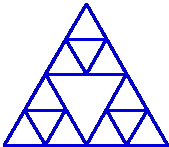 |
 |
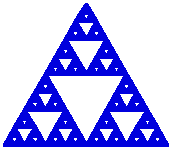 |
|
|
|
|
Click HERE for a GSP script of Sierpenski's Triangle.
Koch's Snowflake is created by constructing the Koch Curve on all three sides on an equilateral triangle.
The Koch Curve was first discovered by Helge von Koch in 1904. The Koch Curve is constructed by dividing a line segment into three congruent pieces and then replacing the middle piece by two sides of an equilateral triangle (with sides of length equal to the removed middle piece of the original segment). The process is then repeated on each of the four pieces of the curve.

Here are a few iterations of the fractal:
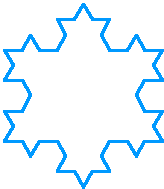 |
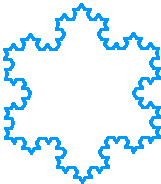 |
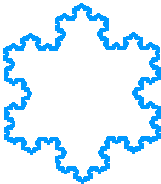 |
|
|
|
|
Click HERE for a GSP script of Koch's Curve.
The Hat Curve is formed by dividing a line segment into three congruent pieces. The middle piece is then replaced by three sides of a square (with sides of length equal to the removed middle piece of the original segment). The process is then repeated on each of the five pieces of the curve.

Here are a few iterations of the fractal:
 |
 |
 |
|
|
|
|
Click HERE for a GSP script of a Hat Curve.
The Dragon Fractal appears at higher and higher levels at the beginning of each chapter of the novel Jurrassic Park, by Michael Creighton.
The Dragon Fractal is created by starting with a segment. The segment is treated as the hypotenuse of a right isosceles triangle and is replaced by the legs of the triangle. The process is then repeated on each leg of the triangle.
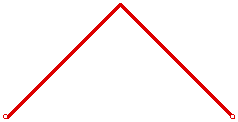
Here are a few iterations of the fractal:
 |
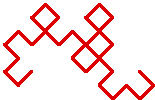 |
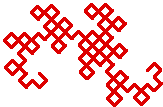 |
|
|
|
|
Click HERE for a GSP script of the Jurassic Park dragon.
The Pythagorean Tree is created by starting with a square and a right triangle constructed with its hypotenuse on one side of the square. The process is then repeated on each leg of the triangle.
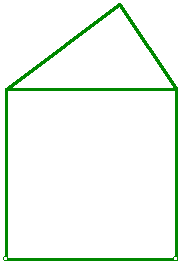
Here are a few iterations of the fractal:
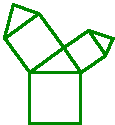 |
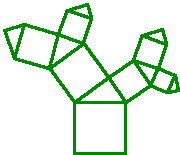 |
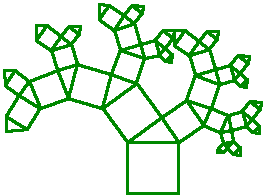 |
|
|
|
|
Click HERE for a GSP script of the Pythagorean Tree.